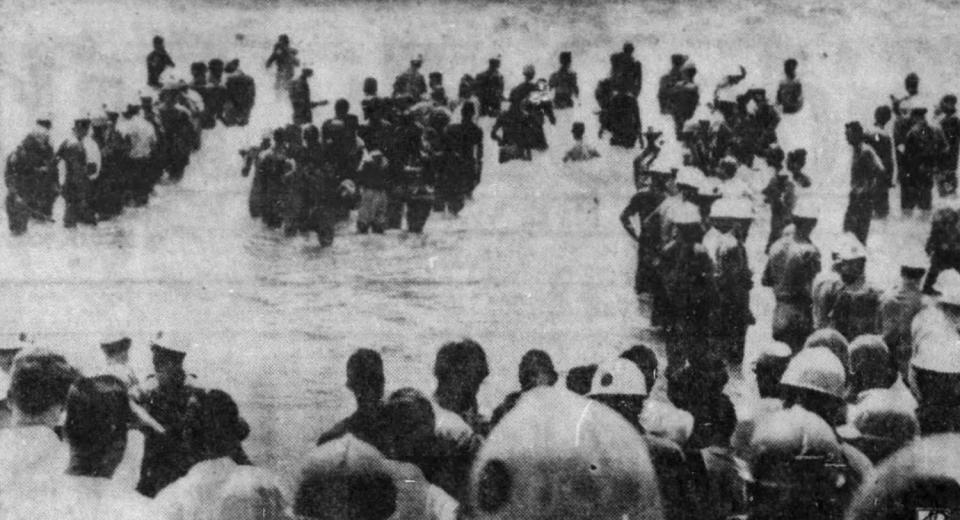Martin Luther King Jr.'s Anastasia Island connection and the history of Butler Beach
- Oops!Something went wrong.Please try again later.
Today the country commemorates Martin Luther King Jr. Day. King was born Jan. 15, 1929, in Atlanta. Now a federal holiday, King’s birthday is observed on the third Monday of January.
An ordained minister, King is known as the chief spokesperson for the nonviolent civil rights leadership movement that eventually led to the passage of the Civil Rights Act of 1964, which protested racial discrimination in federal and state law.
King was assassinated in 1968 in Memphis, Tennessee, by James Earl Ray, a 40-year-old escaped fugitive.
'Trouble don't last always': Activist remembers King, St. Augustine's civil rights struggle
Around Anastasia Island: Right whale sightings, St. Johns Beach Services accepting seasonal applications
Much has been written about events that took place in St. Johns County, which contributed to the passage of the Civil Rights Act of 1964, which outlaws racial segregation in hotels, motels, restaurants and other public accommodations, and job discrimination against Blacks and women. Efforts by Blacks included the much-publicized sit-in at Woolworth’s lunch counter in 1963 and the swim-in at the whites-only pool at the Monson Motor Lodge in 1964. Both were in downtown St. Augustine.

Events that took place on Anastasia Island, although not as widely publicized, also added to the successful passage of the Civil Rights Act. In the summer of 1964, wade-ins were conducted at what had historically been an area in St. Augustine Beach reserved for “whites only.”
Black and white supporters came from different parts of the country during a campaign, organized locally by Dr. Robert B. Hayling, that brought King and members of the Southern Christian Leadership Conference to St. Augustine. The many rallies, marches, sit-ins, and wade-ins that took place here are credited with contributing directly to the passage and signing of the landmark Civil Rights Act of 1964.
Long before King and his followers were pressing for civil rights equality, Frank Butler, a local Black businessman and a leader in the St. Augustine area movement, was setting his own civil rights course. The oceanfront area owned by Butler was the only beach area where Blacks were actually permitted, not only locally, but also between Jacksonville and Daytona, during segregation.
St. Augustine news: Sisters of St. Joseph to restore former segregated school to new St. Augustine community center
Historic building: St. Augustine considers Cultural Council lease for Water Works building
Butler, who owned the Palace Market in the Lincolnville district of St. Augustine, began buying land on Anastasia Island in 1927. Over time, he developed a residential subdivision, casino, motel and beach resort for Blacks. Butler hosted King and his associates in his motel in 1964 during King’s visit to St. Augustine.
Butler later sold part of that property to the State of Florida for development as a state park for Blacks. After Butler died in 1973 the park declined without his continual lobbying for support. In 1980, the park was turned over to St. Johns County with the stipulation that it be named Frank B. Butler County Park.
The oceanfront park is on Anastasia Island at 5860 A1A S., off the Mary Street Beach Ramp and draws visitors of all races. It provides restrooms and showers, off-beach parking, a dunes walkover to the beach, picnic tables and a beach pavilion. The beaches are staffed by county lifeguards from Memorial Day weekend through Labor Day.
Lorraine Thompson is a columnist for The St. Augustine Record.
This article originally appeared on St. Augustine Record: Martin Luther King Jr.'s Anastasia Island connection; Butler Beach history

